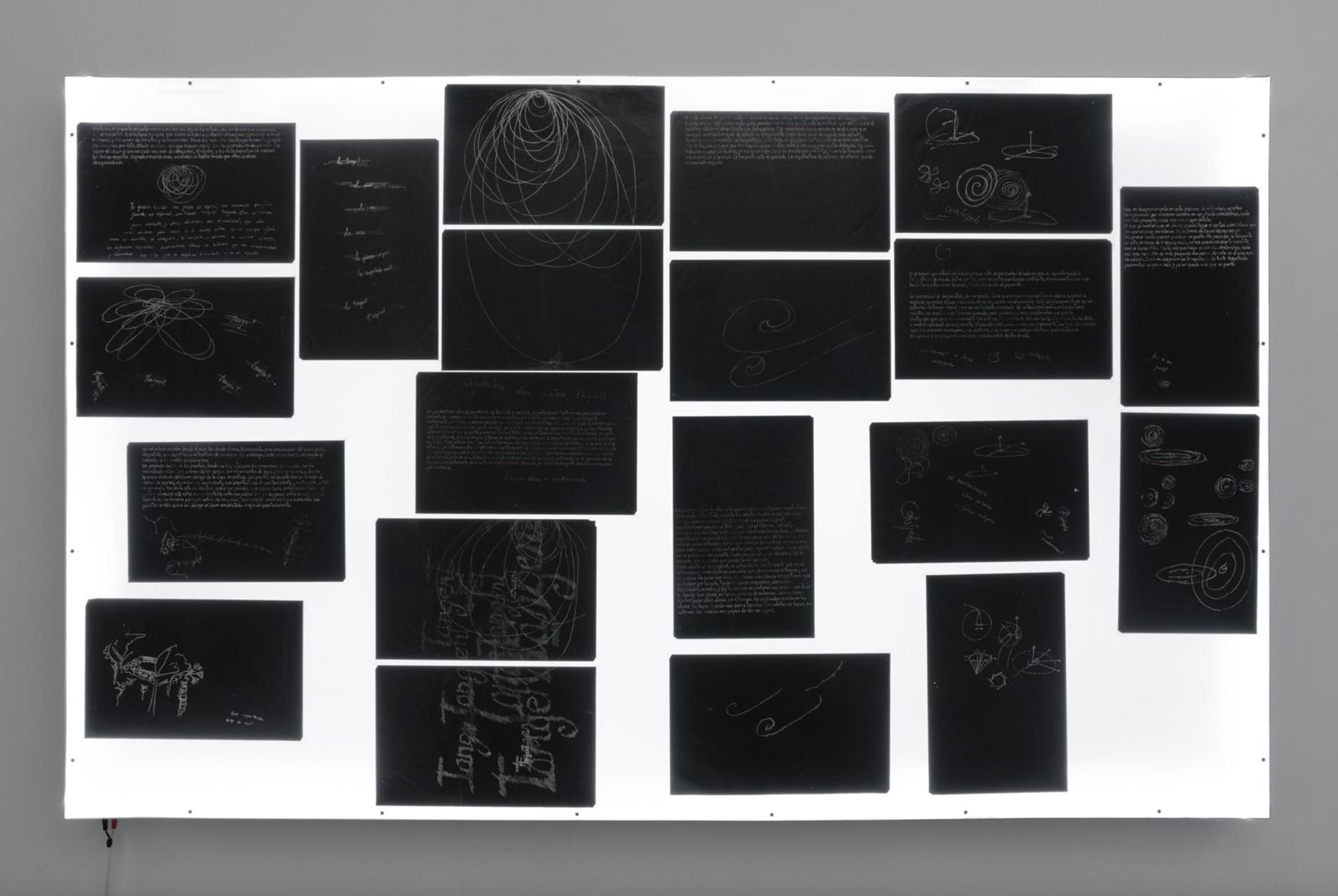
Claudia Pagès Rabal
Exhibition
-> May 8 2025 – Jul 25 2025
Travesía Cuatro presents Claudia Pagès Rabal's work in their Project Room.
Claudia Pagès Rabal confronts the processes, relationships, and foundational narratives of hegemonic structures through a multidisciplinary artistic practice, including video, sculpture, text, performance, and installation. In this exhibition, the works conform a fragmented map where the geographical, political, and linguistic intertwine in the landscape of Montjuïc, the “mountain of the gerund”, as the artist conceives it: a place where the clock loses its hands, allowing life, death, and all the tensions imposed by the system between these two states to coexist.
At the center of the exhibition is Walking the Gerund Mountain (Montjuïc bando port), a video installation that documents the artist’s walk across different sides of Montjuïc: spaces marked by economic inequality, paradoxes between solemn landmarks and tourist viewpoints, and the presence of invasive plant species. Pagès reveals how this mountain holds multiple layers of power, violence, resistance, and memory.
On the side walls of the exhibition space, the concept of the gerund reappears—this time as traces on carbon paper. Pagès constructs a universe where every sign and gesture leaves a mark, now rendered in negative. The carbon paper requires the interaction of light in Boundaries mur, canya invasora and in El port fa nino-nino, in such a way that the absence of carbon on the surface reveals silhouettes of mirrored words, walls, canes, and the mountain’s flora.
These traces offer ways of understanding how we inhabit spaces, how we name them, and how those names speaks to us in return. The port, the mountain, the walls, and the invasive plants are not mere studies of landscape; they are bodies in tension, traversed by violence, historically contradictory structures, and resonances of warfare. Thus, Claudia Pagès’s works do not represent territory per se, but speak of the gerund as a continuous action—as if territory and identity were condemned to a perpetual, impersonal progression that ultimately upholds the status quo.
From this logic emerges Fugues Gerund (Agua Salada), a work also made with carbon paper on aluminum and LED light. In the presence of light, it becomes a manual for escaping the gerund—not only as a verbal time but as a structural agent of hegemony. Each fragment of text and image proposes a possible exit, exploring alternative forms of understanding through nonlinear and queer temporalities.
Claudia Pagès moves between language and place, allowing words to erode the rigid edges of both geographic and symbolic maps. Rather than closing off meaning, her works open it inviting the viewer to read space as an echo, bouncing back and forth between the past and the never-ending now.
–Travesía Cuatro